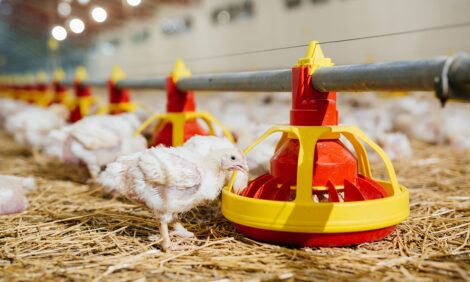



Antimicrobial interventions effectively reduce Salmonella serovar complexity
A limitation to traditional Salmonella culturing is that often only a single colony is characterizedApproximately one in five salmonellosis cases is attributed to consumption of contaminated chicken. A limitation to traditional Salmonella culturing is that often a single colony is picked and characterized. This favors the most abundant serovar in a sample, effectively masking other serovars that are also present.
CRISPR-SeroSeq is a deep serotyping approach that resolves the relative frequency of multiple serovars in a sample. A study was done using deep serotyping to assess Salmonella serovar complexity during broiler processing and to determine the impact of antimicrobial interventions on serovar dynamics. The results of the study were presented as a poster session at the 2024 International Poultry Scientific Forum by graduate student Amber Richards and colleagues at the University of Georgia.
Hot rehang and post-chill chicken carcasses were collected from processing plants across the United States from August to November 2022. CRISPR-SeroSeq was performed on Salmonella-positive broiler carcasses collected at hot rehang (n = 153) and postchill (n = 38). This data set included 31 paired hot rehang and post-chill carcass rinses, 122 unpaired hot rehang, and 7 unpaired post-chill carcass rinses (n=191).
Multiple serovars were detected in 48.4% (74/153) rehang and 7.9% (3/38) post-chill samples. Rehang carcasses had more serovars per sample (1.6 serovars/carcass) than post-chill carcasses (1.1 serovars/carcass).
There was 98.4% (188/191) concordance between traditional isolation with serotyping and CRISPR-SeroSeq. Comparison of serotyped colonies showed 71.0% (22/31) of serovars matched between paired rehang and post-chill samples. This discrepancy was partially explained when CRISPR-SeroSeq data was included as the concordance increased to 87.1% (27/31).
Nineteen different serovars were identified; serovar Kentucky was the most common in rehang (72.5%; 111/153) and post-chill (73.7%; 28/38) samples. Serovar Infantis had a higher prevalence in rehang (39.9%; 61/153) than in post-chill (7.9%; 3/38) samples.
These data demonstrate that processing interventions effectively reduce Salmonella, as serovar complexity was reduced in nearly all post-chill samples. This study exhibits how deep serotyping is an effective technique for profiling Salmonella populations and could be used to guide the development of serovar-specific interventions, concluded the researchers.









